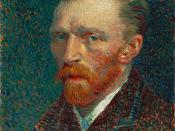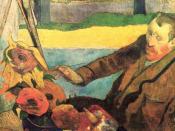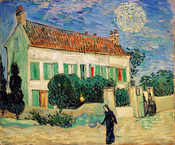Postimpressionism is a term used for the various styles of painting that followed Impressionism in the late 1880's in France. The English artist and critic Roger Fry (1886-1934) labeled the term to the movement in 1910. Postimpressionist art grew from Impressionism but strayed from traditional tendencies. Artists such as Paul Cezanne, Paul Gauguin, Vincent van Gogh, and Gorges Seurat were among the most famous. The Postimpressionists all took different approaches to the new art form but shared their conflict with the traditional and academic view of art.
Paul Cézanne (1839-1906) developed a revolutionary style of painting that gave him the name "father of modern art" and was a pioneer of the art form known as Cubism. Cézanne preferred painting directly from nature just as the impressionists did but slowly, created his own unique style. Some of his paintings he would work on for months or even years.
"A dab of color here would be balanced by another there, in a slow, painstaking process" (Halliwell 35). Cézanne enjoyed painting landscapes. He would sometimes paint the same scene a number of times. One of his adorations was Mont Sainte Victoire, which he painted about 60 times. Cézanne would ignore surface detail and reduce it to a mass of geometrical shapes. He also painted still lifes like apples and oranges, which seemed to be placed in a slapdash fashion but Cézanne, would spend hours arranging them in a way so that they were in perfect placement. Cézannes still lifes such as "his fruits, flowers, tablecloths, and crockery, have the dignity and grandeur-even the dramatic substance-which other artists extract from human beings" (Craven 215). He achieved the ability to bring human quality through everyday objects. Some other characteristics of his paintings were the blocks of color. Cézanne was not worried about...


